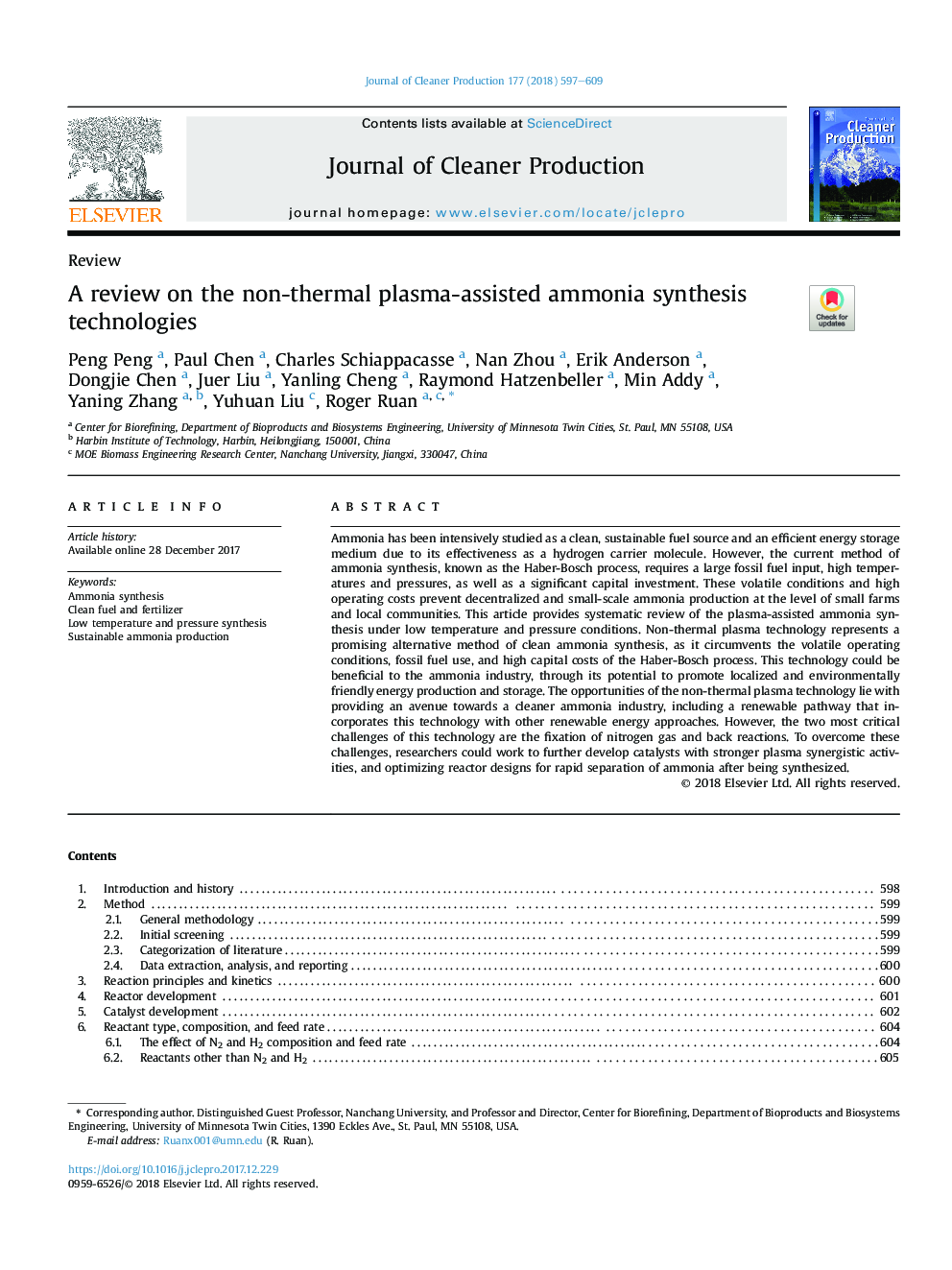| Article ID | Journal | Published Year | Pages | File Type |
|---|---|---|---|---|
| 8098764 | Journal of Cleaner Production | 2018 | 13 Pages |
Abstract
Ammonia has been intensively studied as a clean, sustainable fuel source and an efficient energy storage medium due to its effectiveness as a hydrogen carrier molecule. However, the current method of ammonia synthesis, known as the Haber-Bosch process, requires a large fossil fuel input, high temperatures and pressures, as well as a significant capital investment. These volatile conditions and high operating costs prevent decentralized and small-scale ammonia production at the level of small farms and local communities. This article provides systematic review of the plasma-assisted ammonia synthesis under low temperature and pressure conditions. Non-thermal plasma technology represents a promising alternative method of clean ammonia synthesis, as it circumvents the volatile operating conditions, fossil fuel use, and high capital costs of the Haber-Bosch process. This technology could be beneficial to the ammonia industry, through its potential to promote localized and environmentally friendly energy production and storage. The opportunities of the non-thermal plasma technology lie with providing an avenue towards a cleaner ammonia industry, including a renewable pathway that incorporates this technology with other renewable energy approaches. However, the two most critical challenges of this technology are the fixation of nitrogen gas and back reactions. To overcome these challenges, researchers could work to further develop catalysts with stronger plasma synergistic activities, and optimizing reactor designs for rapid separation of ammonia after being synthesized.
Keywords
Related Topics
Physical Sciences and Engineering
Energy
Renewable Energy, Sustainability and the Environment
Authors
Peng Peng, Paul Chen, Charles Schiappacasse, Nan Zhou, Erik Anderson, Dongjie Chen, Juer Liu, Yanling Cheng, Raymond Hatzenbeller, Min Addy, Yaning Zhang, Yuhuan Liu, Roger Ruan,
